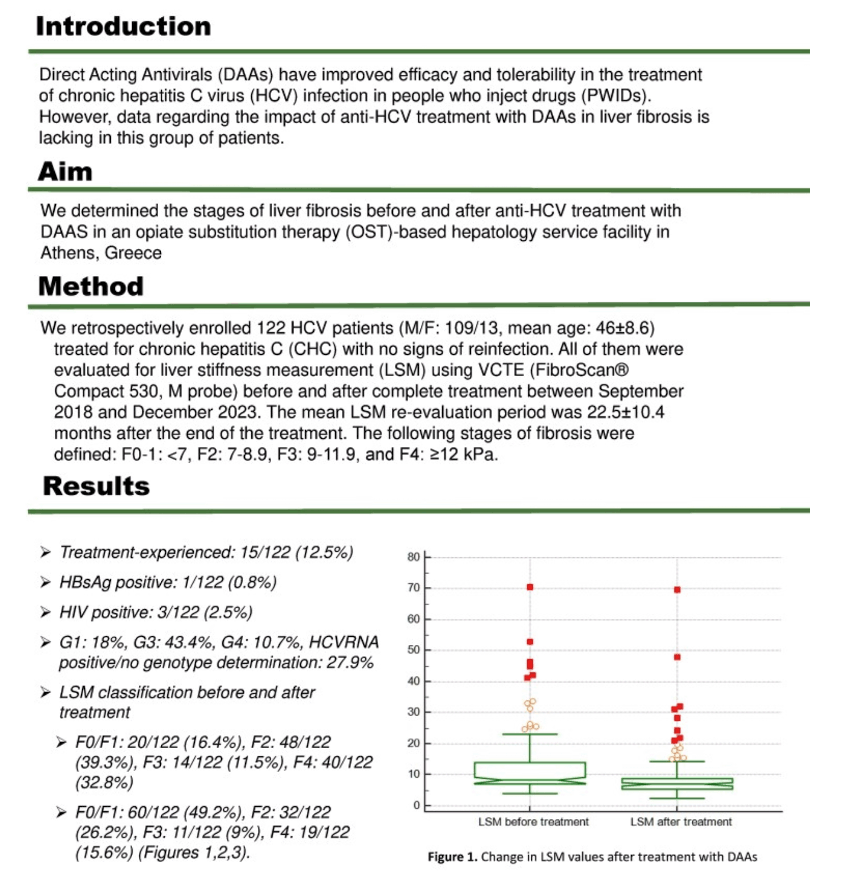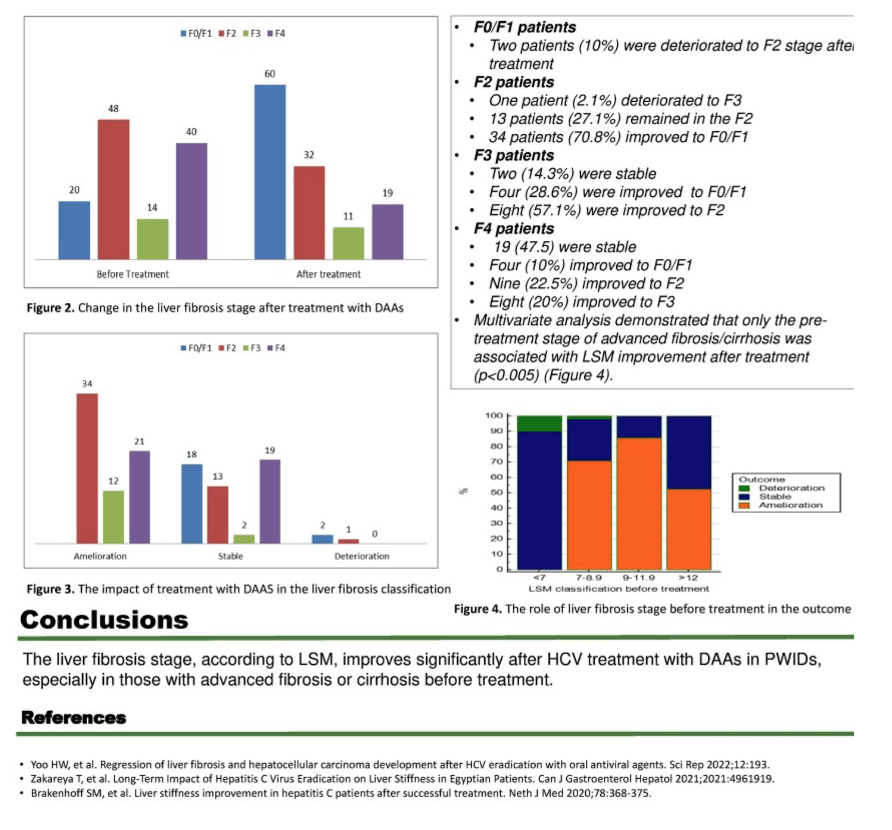 |
 |
 |
| |
Liver stiffness measurement before and after antiviral treatment for hepatitis C: results from an OST-based hepatology service facility
|
| |
| |
EASL 2024 June 5-8 Milan, Italy

ABSTRACT
Results: 15/122 (12.5%) were treatment-experienced, 1/122 (0.8%) were HBsAg positive, and 3/122 (2.5%) were HIV positive. Genotype distribution: G1: 18%, G3: 43.4%, G4: 10.7%, HCVRNA positive/no genotype determination: 27.9%. Before treatment, liver fibrosis classification according to LSM was: F0/F1: 20/122 (16.4%), F2: 48/122 (39.3%), F3: 14/122 (11.5%), F4: 40/122 (32.8%), while after treatment was: F0/F1: 60/122 (49.2%), F2: 32/122 (26.2%), F3: 11/122 (9%), F4: 19/122 (15.6%).
The mean LSM re-evaluation period was 22.5±10.4 months after the end of the treatment. Two F0/F1 patients (10%) were deteriorated to F2 stage after treatment. One F2 patient (2.1%) deteriorated to the F3 stage after treatment, 13 patients (27.1%) remained in the F2 stage, while 34 patients (70.8%) improved to F0/F1. Two (14.3%) F3 patients were stable after treatment, while 12 (85.7%) were improved. Finally, 19 (47.5) of the F4 patients were stable, while 21 (52.5%) improved. Multivariate analysis demonstrated that the pre-treatment stage of advanced fibrosis/cirrhosis was associated with LSM improvement after treatment (Chi-Square: 48.246, p<0.005).
Conclusion: The liver fibrosis stage, according to LSM, improves significantly after HCV treatment with DAAs in PWIDs, especially in those with advanced fibrosis or cirrhosis before treatment.


|
| |
|
 |
 |
|
|